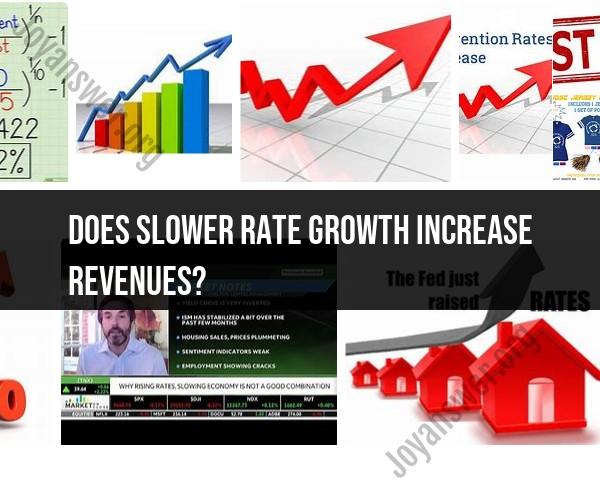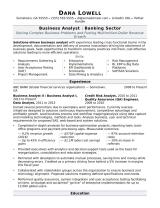Does slower rate growth increase revenues?
No, slower rate growth does not increase revenues; in fact, it typically has the opposite effect. Revenue growth refers to the increase in a company's sales or income over a specific period, often compared year-over-year. If the rate of revenue growth is slower, it means that the company's revenue is increasing at a diminished pace compared to previous periods or expectations. There are several key points to consider:
Revenue Growth: Revenue growth is a positive indicator for a business. It signifies that the company is selling more of its products or services, potentially gaining market share, and increasing its top-line earnings.
Slower Growth: Slower revenue growth implies that a company's sales are not increasing as rapidly as they have in the past. This could be due to various factors, such as market saturation, increased competition, economic downturns, or changes in consumer preferences.
Impact on Revenues: Slower revenue growth does not increase total revenues. Instead, it means that the company's revenues are growing at a reduced rate or even stagnating. While the company may still be earning more than in previous years, the growth rate is lower.
Potential Consequences: Slower revenue growth can have several consequences for a business, including reduced profitability, challenges in meeting financial obligations, and potential concerns among investors and stakeholders. It may also lead to a reassessment of the company's strategies and operations to identify areas for improvement.
Long-Term Considerations: While slower revenue growth does not increase revenues in the short term, it may be a signal for a company to adapt and innovate. Businesses often use strategies such as cost-cutting, market expansion, product diversification, or efficiency improvements to address slower growth and work toward increasing revenues over the long term.
In summary, slower rate growth does not increase revenues; it indicates a deceleration in revenue growth. Businesses typically aim for consistent or accelerating revenue growth to drive profitability and shareholder value. When faced with slower growth, companies may need to make strategic adjustments to stimulate growth and maintain their competitive position in the market.
Does Slower Rate Growth Lead to Increased Revenues? Examining the Relationship
There is no one-size-fits-all answer to the question of whether slower rate growth leads to increased revenues. The relationship between growth and revenue is complex and depends on a variety of factors, including the industry, the company's business model, and the overall economic environment.
In some cases, slower rate growth can lead to increased revenues. For example, a company that is already operating at a high level of efficiency may find that it can generate more revenue by focusing on improving its customer service or product quality. Additionally, companies that are in industries that are growing slowly may be able to increase their market share by taking advantage of the slower growth of their competitors.
However, in other cases, slower rate growth can lead to decreased revenues. For example, a company that is in an industry that is declining may find it difficult to maintain its revenue levels in the face of declining demand. Additionally, companies that are facing increased competition from new entrants or from established competitors may find that their revenue growth slows down.
The Dynamics of Growth and Revenue: How Slower Rates Impact Business
The dynamics of growth and revenue can be complex and vary depending on the specific business. However, there are some general trends that can be observed.
In general, companies that are growing rapidly tend to have higher revenue growth than companies that are growing slowly. This is because rapidly growing companies are typically able to attract new customers and expand into new markets. Additionally, rapidly growing companies are often able to invest more in research and development, which can lead to new products and services that can generate additional revenue.
However, there are a number of factors that can slow down revenue growth, even for companies that are growing rapidly. For example, economic downturns can lead to a decrease in demand for goods and services, which can slow down revenue growth for all companies. Additionally, increased competition from new entrants or from established competitors can also slow down revenue growth.
Revenue vs. Growth: Unpacking the Effects of Slower Rate Increases
Revenue and growth are two different concepts that are often used interchangeably. However, it is important to understand the difference between the two.
Revenue is the amount of money that a company generates from the sale of its goods and services. Revenue is an important measure of a company's financial performance, as it indicates how much money the company is generating from its operations.
Growth, on the other hand, is the rate at which a company's revenue is increasing. Growth is an important measure of a company's future prospects, as it indicates how quickly the company is expanding and becoming more profitable.
Slower rate growth can have a number of effects on a company's revenue. In general, slower rate growth will lead to lower revenue growth. However, the specific impact of slower rate growth on revenue will vary depending on the company's industry, business model, and the overall economic environment.
For example, a company in a declining industry may find that its revenue growth slows down to zero or even becomes negative. On the other hand, a company in a growing industry may be able to maintain positive revenue growth, even if its rate of growth slows down.
Additionally, the impact of slower rate growth on revenue will depend on the company's business model. For example, a company that relies on recurring revenue streams, such as subscription fees, may be able to maintain positive revenue growth even if its customer growth slows down. On the other hand, a company that relies on one-time sales may find that its revenue growth slows down significantly if its sales volume declines.
Finally, the impact of slower rate growth on revenue will also depend on the overall economic environment. For example, a company may find that its revenue growth slows down even if its own performance is strong, if the overall economy is slowing down.
Overall, the relationship between slower rate growth and revenue is complex and depends on a variety of factors. It is important to consider all of these factors when assessing the impact of slower rate growth on a particular company's revenue.












